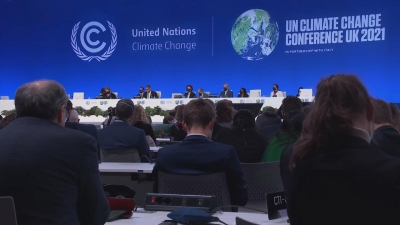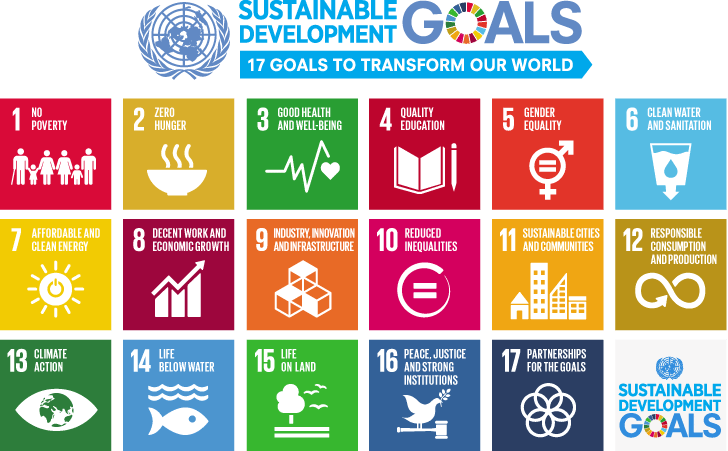WHAT IS THE ROLE OF UNFCCC?

UNFCCC stands for the United Nations Framework Convention on Climate Change. It came into force in 1994, and almost all countries of the world are its members. The convention aims to prevent "dangerous" human interference with the climate system. By bringing together almost all countries of the world, it places the onus on them to ensure a better planet for all of us. In fact, the members are bound "to act in the interests of human safety even in the face of scientific uncertainty".
First steps to a safer future: the Convention in summary
The Convention:
Recognized that there was a problem.
This was remarkable for its time. Remember, in 1994, when the UNFCCC took effect, there was less scientific evidence than there is now. The UNFCCC borrowed a very important line from one of the most successful multilateral environmental treaties in history (the Montreal Protocol, in 1987): it bound member states to act in the interests of human safety even in the face of scientific uncertainty.
Sets a lofty but specific goal.
The ultimate objective of the Convention is to stabilize greenhouse gas concentrations "at a level that would prevent dangerous anthropogenic (human induced) interference with the climate system." It states that "such a level should be achieved within a time-frame sufficient to allow ecosystems to adapt naturally to climate change, to ensure that food production is not threatened, and to enable economic development to proceed in a sustainable manner."
Puts the onus on developed countries to lead the way.
The idea is that, as they are the source of most past and current greenhouse gas emissions, industrialized countries are expected to do the most to cut emissions on home ground. They are called Annex I countries and belong to the Organization for Economic Cooperation and Development (OECD). They include 12 countries with "economies in transition" from Central and Eastern Europe. Annex I countries were expected by the year 2000 to reduce emissions to 1990 levels. Many of them have taken strong action to do so, and some have already succeeded.
Directs new funds to climate change activities in developing countries.
Industrialized nations agree under the Convention to support climate change activities in developing countries by providing financial support for action on climate change-- above and beyond any financial assistance they already provide to these countries. A system of grants and loans has been set up through the Convention and is managed by the Global Environment Facility. Industrialized countries also agree to share technology with less-advanced nations.
Keeps tabs on the problem and what's being done about it.
Industrialized countries (Annex I) have to report regularly on their climate change policies and measures, including issues governed by the Kyoto Protocol (for countries which have ratified it).
They must also submit an annual inventory of their greenhouse gas emissions, including data for their base year (1990)and all the years since.
Developing countries (Non-Annex I Parties) report in more general terms on their actions both to address climate change and to adapt to its impacts - but less regularly than Annex I Parties do, and their reporting is contingent on their getting funding for the preparation of the reports, particularly in the case of the Least Developed Countries.
Charts the beginnings of a path to strike a delicate balance.
Economic development is particularly vital to the world's poorer countries. Such progress is difficult to achieve even without the complications added by climate change. The Convention takes this into consideration by accepting that the share of greenhouse gas emissions produced by developing nations will grow in the coming years. Nonetheless, in the interests of fulfilling its ultimate goal, it seeks to help such countries limit emissions in ways that will not hinder their economic progress. One such win-win solution was to emerge later, when the Kyoto Protocol to the Convention was conceived.
Kicks off formal consideration of adaptation to climate change.
The Convention acknowledges the vulnerability of all countries to the effects of climate change and calls for special efforts to ease the consequences, especially in developing countries which lack the resources to do so on their own. In the early years of the Convention, adaptation received less attention than mitigation, as Parties wanted more certainty on impacts of and vulnerability to climate change. When IPCC's Third Assessment Report was released, adaptation gained traction, and Parties agreed on a process to address adverse effects and to establish funding arrangements for adaptation. Currently, work on adaptation takes place under different Convention bodies. The Adaptation Committee, which Parties agreed to set up under the Cancun Adaptation Framework as part of the Cancun Agreements, is a major step towards a cohesive, Convention-based approach to adaptation.
UNFCCC and the Rio Convention
The UNFCCC is a “Rio Convention”, one of two opened for signature at the “Rio Earth Summit” in 1992. Its sister Rio Conventions are the UN Convention on Biological Diversity and the Convention to Combat Desertification. The three are intrinsically linked. It is in this context that the Joint Liaison Group was set up to boost cooperation among the three Conventions, with the ultimate aim of developing synergies in their activities on issues of mutual concern.
Credit : United nations climate change
Picture Credit : Google
